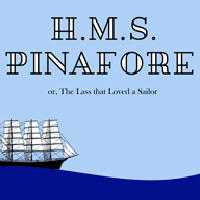 G&S performer Janiah Lockett ’20 steps into the director's role for the beloved operetta H.M.S Pinafore. She's committed to the work's historical era, but she also has her eye on contemporary times.
G&S performer Janiah Lockett ’20 steps into the director's role for the beloved operetta H.M.S Pinafore. She's committed to the work's historical era, but she also has her eye on contemporary times.
By William Swett '22
You may be used to seeing Janiah Lockett ’20 onstage as a singer during Harvard-Radcliffe Gilbert and Sullivan shows. For the production of H.M.S. Pinafore Nov. 8-17 at Agassiz Theater, Lockett has stepped into the stage director position – a new role for her. As such, she is taking a fresh look at the material.
In the past, productions by the Harvard-Radcliffe G&S productions have used abstract staging.
“Typically, people are excited to direct G&S in a way that is experimental – take these older pieces of texts and music, theatrical works, and see how they can frame them in a  modern and abstract way, which has led to some really exciting productions,” Lockett says.
modern and abstract way, which has led to some really exciting productions,” Lockett says.
“This time we wanted to change the pace and do a traditional version of the show, which means that everyone is in 19th century costumes, and it’s on a ship. What that means for me as stage director is that I’m going to do exactly what’s in the text without interpreting it too much.”
However, putting on a historically accurate version of the show is no easy task. Lockett believes that the challenge has offered a lot of value to her as an artist.
“Of course there are some anachronisms that show up as a result of the book being written in the 19th century that we have amended,” she says. “But for the most part, it was a great opportunity for me – as a person who’s acted in a lot of abstract experimental shows – to really challenge myself to take the libretto at its word, see what it’s saying and challenge ourselves to see just what it’s asking the actors to do instead of trying to interpret.”
Lockett may be focusing on a more traditional approach, but the art of the draw to G&S, she says, is that the operettas also allow audiences to see “modern people in a traditional context.” For instance, the cast features people of color.
“When the show was first performed, [they] probably would not have been considered for certain roles because of the way racial dynamics were working in the country in which the show premiered,” she says. “But I think the great thing about doing a traditional show is that you get to, in kind of a revisionist sense, go back and allow people to be represented who have not been able to exist in this framework before. I think the main point is that anybody can wear a bustle, anybody can be captain in the 19th century, and it’s also just really fun.”